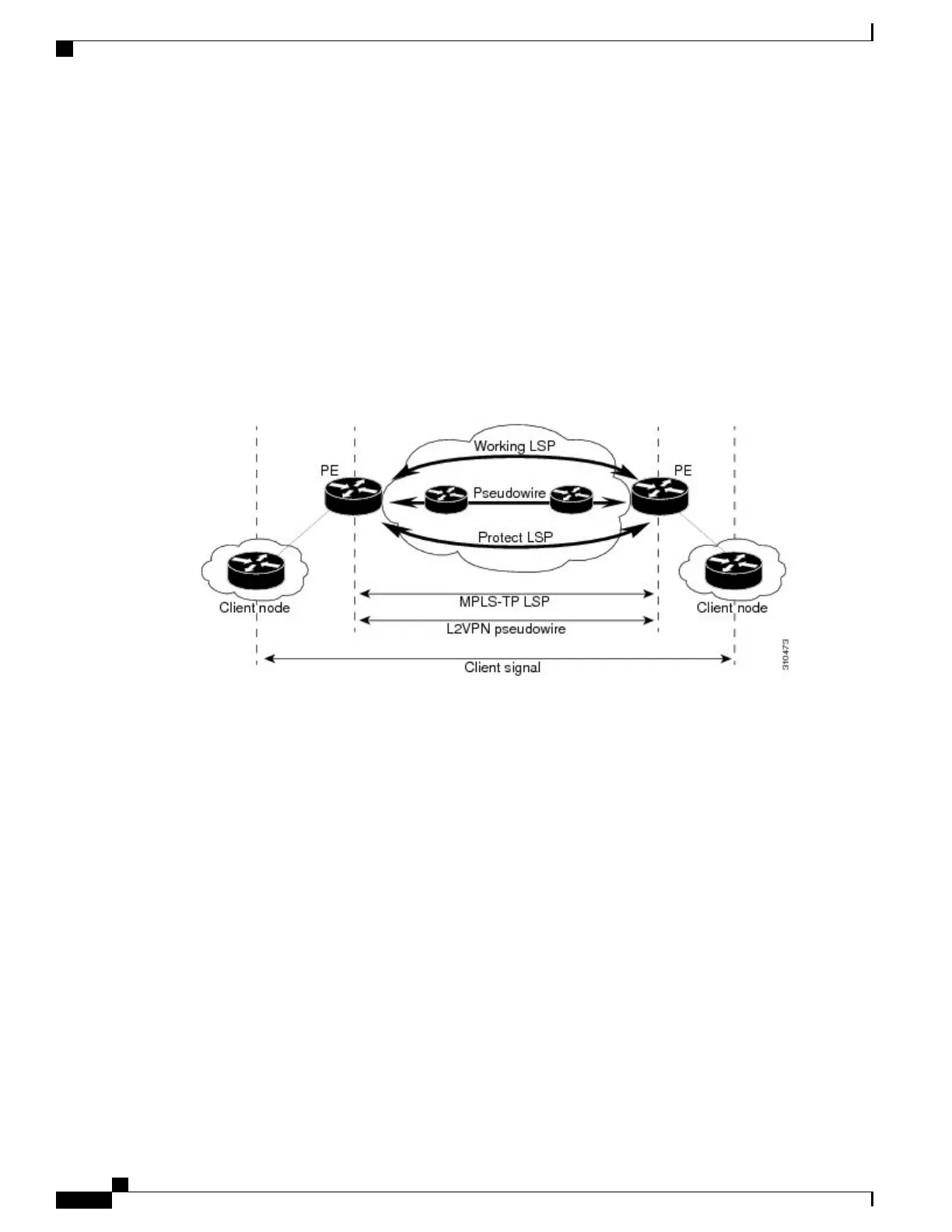Information About MPLS-TP
How MPLS Transport Profile Works
Multiprotocol Label Switching Transport Profile (MPLS-TP) tunnels provide the transport network service
layer over which IP and MPLS traffic traverses. MPLS-TP tunnels help transition from Synchronous Optical
Network/Synchronous Digital Hierarchy (SONET/SDH) and Time Division Multiplexing (TDM) technologies
to packet switching to support services with high bandwidth utilization and lower cost. Transport networks
are connection-oriented, statically provisioned, and have long-lived connections. Transport networks usually
avoid control protocols that change identifiers (like labels). MPLS-TP tunnels provide this functionality
through statically provisioned bidirectional label switched paths (LSPs), as shown in the figure below.
MPLS-TP is supported on ATM and TDM pseudowires on the Cisco ASR 903 router. For information, see
Configuring the Pseudowire Class.
MPLS-TP Path Protection
MPLS-TP label switched paths (LSPs) support 1-to-1 path protection. There are two types of LSPs: protect
LSPs and working LSPs. You can configure the both types of LSPs when configuring the MPLS-TP tunnel.
The working LSP is the primary LSP used to route traffic. The protect LSP acts as a backup for a working
LSP. If the working LSP fails, traffic is switched to the protect LSP until the working LSP is restored, at
which time forwarding reverts back to the working LSP.
Bidirectional LSPs
Multiprotocol Label Switching Transport Profile (MPLS-TP) label switched paths (LSPs) are bidirectional
and co-routed. They comprise of two unidirectional LSPs that are supported by the MPLS forwarding
infrastructure. A TP tunnel consists of a pair of unidirectional tunnels that provide a bidirectional LSP. Each
unidirectional tunnel can be optionally protected with a protect LSP that activates automatically upon failure
conditions.
MPLS Basic Configuration Guide, Cisco IOS XE Everest 16.5.1 (Cisco ASR 900 Series)
12
MPLS Transport Profile
Information About MPLS-TP

